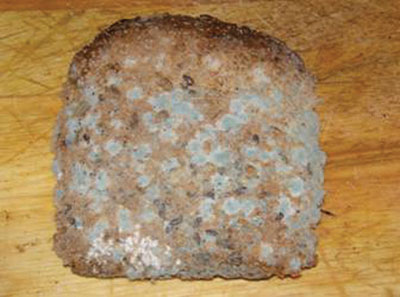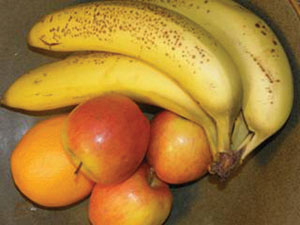8.2.2 Intrinsic factors
Intrinsic factors exist as part of the food product itself. For example, meat has certain characteristics that may promote the growth of certain microorganisms. The following common intrinsic factors affect the growth and multiplication of microorganisms in foods.
pH
pH is pronounced ‘pee-aitch’.
The scientific term pH is a measure of how acidic or alkaline an environment is, on a scale that has ‘neutral’ (neither acid nor alkaline) at pH7. Environments that are acidic have pH values below 7; those that are alkaline have pH values above 7. Most microorganisms grow best at close to the neutral pH value (pH 6.6 to 7.5). Only a few microorganisms grow in very acid conditions below a pH of 4.0. Bacteria grow at a fairly specific pH for each species, but fungi grow over a wider range of pH values. For example, most meats naturally have a pH of about 5.6 or above. At this pH meat is susceptible to spoilage by bacteria, moulds and yeasts; however the pH of meat can be lowered by pickling, which makes it less favourable as an environment for microorganisms to grow in.
Moisture content (water activity, aw)
Microorganisms need a moist environment to grow in. The water requirements of microorganisms are described in terms of water activity (represented by the symbol aW), a measure of how much water is present. The water activity of pure water is aW = 1.00. Most foodborne pathogenic bacteria require aW to be greater than 0.9 for growth and multiplication; however, Staphylococcus aureus may grow with aW as low as 0.86. But even Staphylococcus aureus cannot grow and multiply in drier food like bread, which has aW = 0.7, although fungi can (Figure 8.1).

Think of some foods that store well when they are dry but become contaminated quickly when they are wet.
You may have thought of different examples: the one that we thought of is rice. When rice is dry it will store for a long time, but when it is cooked and wet it will go bad quite quickly and cause food poisoning.
Nutrient content
In order to grow, multiply and function normally, microorganisms require a range of nutrients such as nitrogen, vitamins and minerals. Microorganisms therefore grow well on nutrient-rich foods.
Structure of food items
The natural covering of some foods provides excellent protection against the entry and subsequent damage by spoilage organisms. Examples of such protective structures are the skin of fruits and vegetables such as tomatoes and bananas (Figure 8.2).

8.2.1 Extrinsic factors
